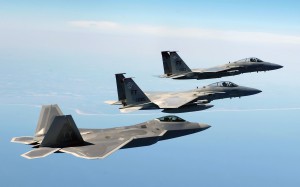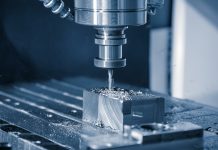 According to Reuters, Lockheed Martin, the Pentagon’s biggest supplier, is ramping up its use of 3D printing and virtual reality simulators to drive down the huge costs of producing national security satellites and safeguard profits in the face of reductions in U.S. defense spending.
According to Reuters, Lockheed Martin, the Pentagon’s biggest supplier, is ramping up its use of 3D printing and virtual reality simulators to drive down the huge costs of producing national security satellites and safeguard profits in the face of reductions in U.S. defense spending.
The company expects to finalize a government contract to buy two new missile-warning satellites in coming weeks for 40 percent less than projected by Pentagon cost estimators due to changes in its manufacturing methods, plant closures and layoffs. Analysts say the deal will be worth around $2 billion. “We’re trying to find new ways of doing things. We’re leaving no stone unturned,” Mark Valerio, vice president and general manager of military space for Lockheed, told Reuters in an interview at the company’s facility south of Denver. Valerio said Lockheed was pushing hard to continue lowering costs so it could maintain strong operating profits even as lower military spending squeezed revenues. He said Lockheed had reached agreement with the Air Force on the 5th and 6th Space-Based Infrared System (SBIRS) missile-warning satellites, and hoped to finalize the details by early July, the company’s first confirmation a contract is near.
Lockheed executives say additive manufacturing, or 3D printing, could trim the weight of key components on spacecraft, allowing the government to pack on more sensors, or launch satellites on smaller, less expensive rockets. Lockheed engineers are evaluating which satellite components could be made with an in-house 3D printer instead of sending specifications to outside suppliers. That could save money and bring more manufacturing back to Lockheed, which relies on suppliers to build about 60 percent of its satellites.
The new manufacturing process allows Lockheed to use fine titanium dust to build lighter-weight parts than possible with older machining techniques and reduces waste, said Dennis Little, vice president of production. Valerio said he was confident the government would eventually approve use of 3D parts on the new SBIRS and other military satellites, noting no major concerns had been raised. “We’ll get there; it’s not that hard,” he said. Lockheed’s interplanetary Juno aircraft, which was launched in 2011 to carry out a NASA mission over Jupiter, carries a part made with 3D printing, and similar parts are used on the company’s revamped A2100 commercial satellites.
Valerio said Lockheed was also working on using the new manufacturing technology to build propulsion tanks. “In the next decade, we will completely change the way a satellite is designed and built. We will print a satellite,” he said. “It’s real. We’re flying it on satellites now.” Lockheed is also using a new virtual reality and simulation laboratory at the Littleton site to work through challenges before starting production. The equipment allows human avatars to interact with machines and streamline production processes. Valerio said the lab helped Lockheed brainstorm a cheaper and far less disruptive way to replace a faulty circuit card on a SBIRS satellite three years ago, saving $150 million and averting a lengthy round of re-testing. The same technology helped Lockheed streamline its production process for a new batch of Global Positioning System (GPS) satellites, reducing the number of times the spacecraft must be lifted during manufacturing by 64 percent, and cutting the distance it travels in the factory by 48 percent, he said.



